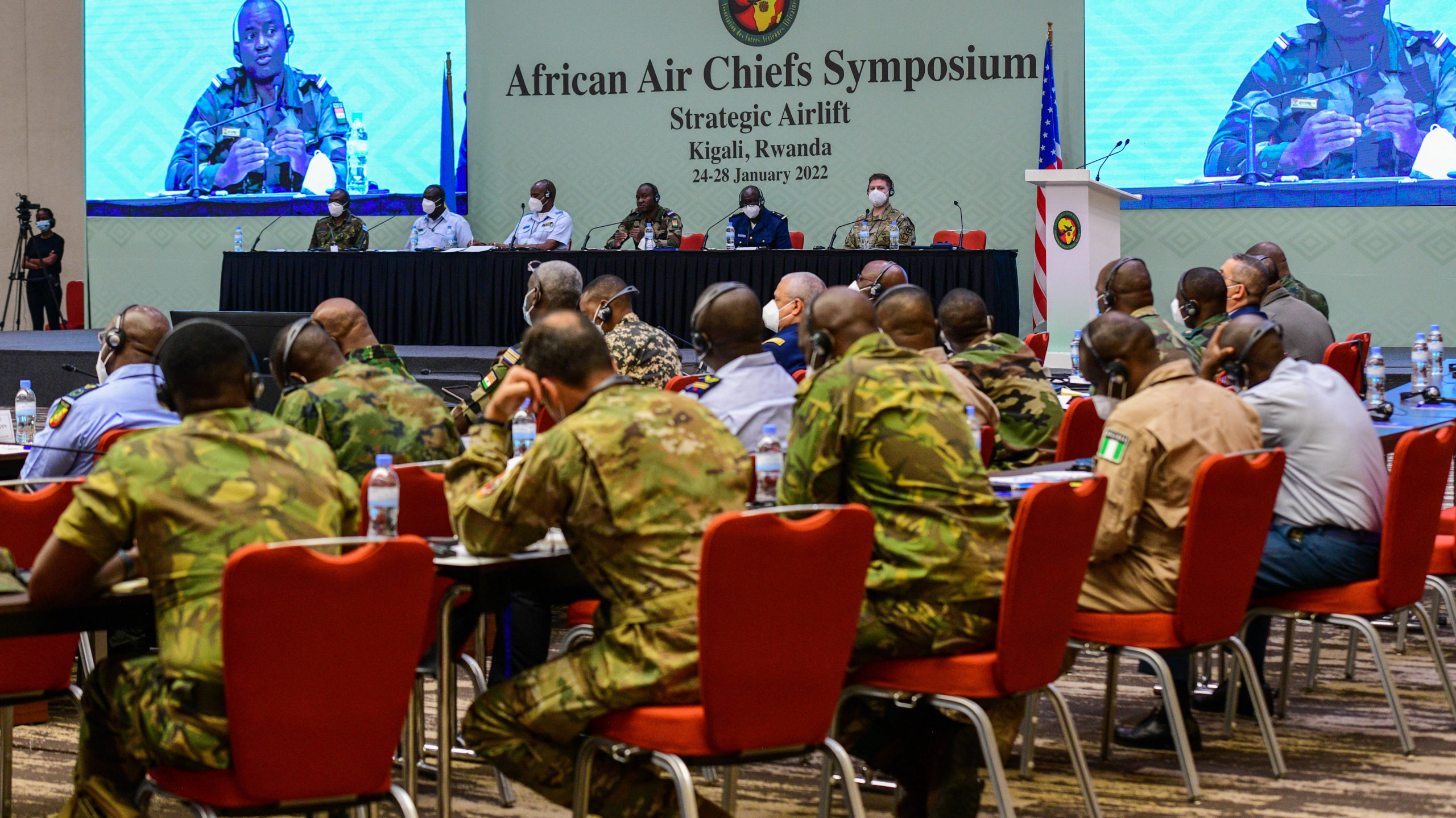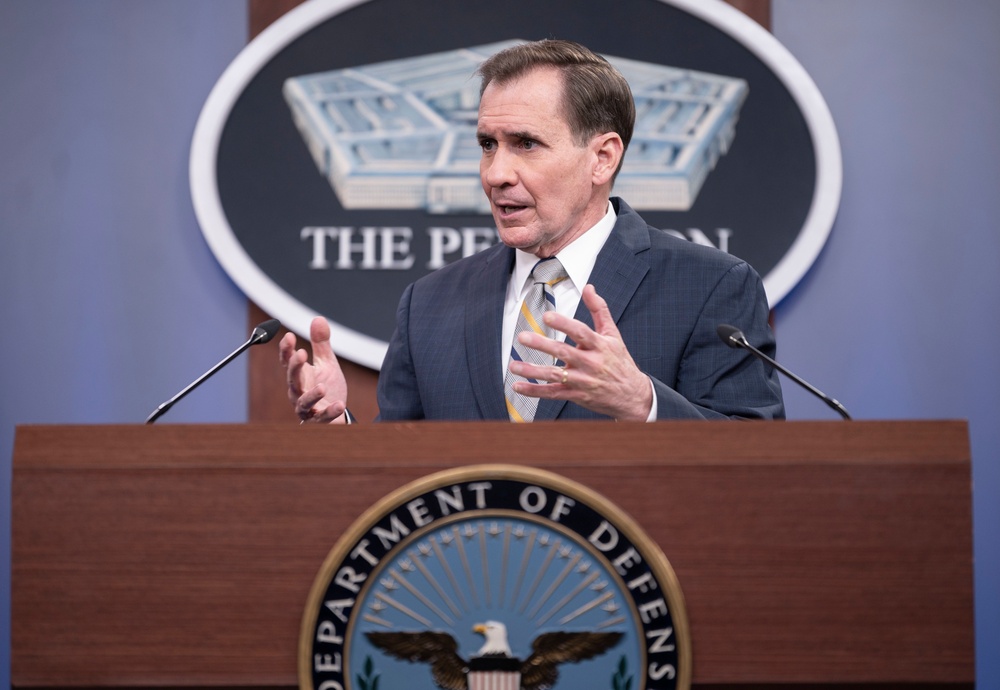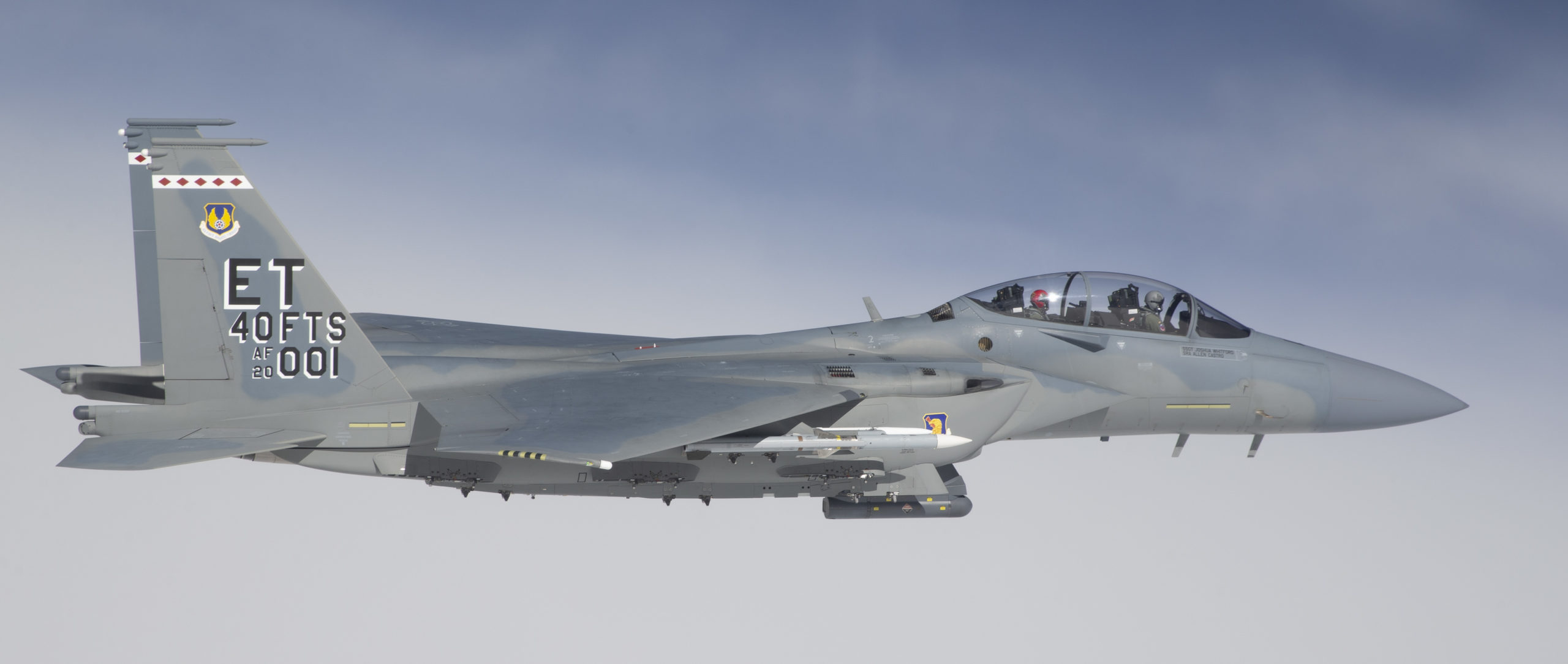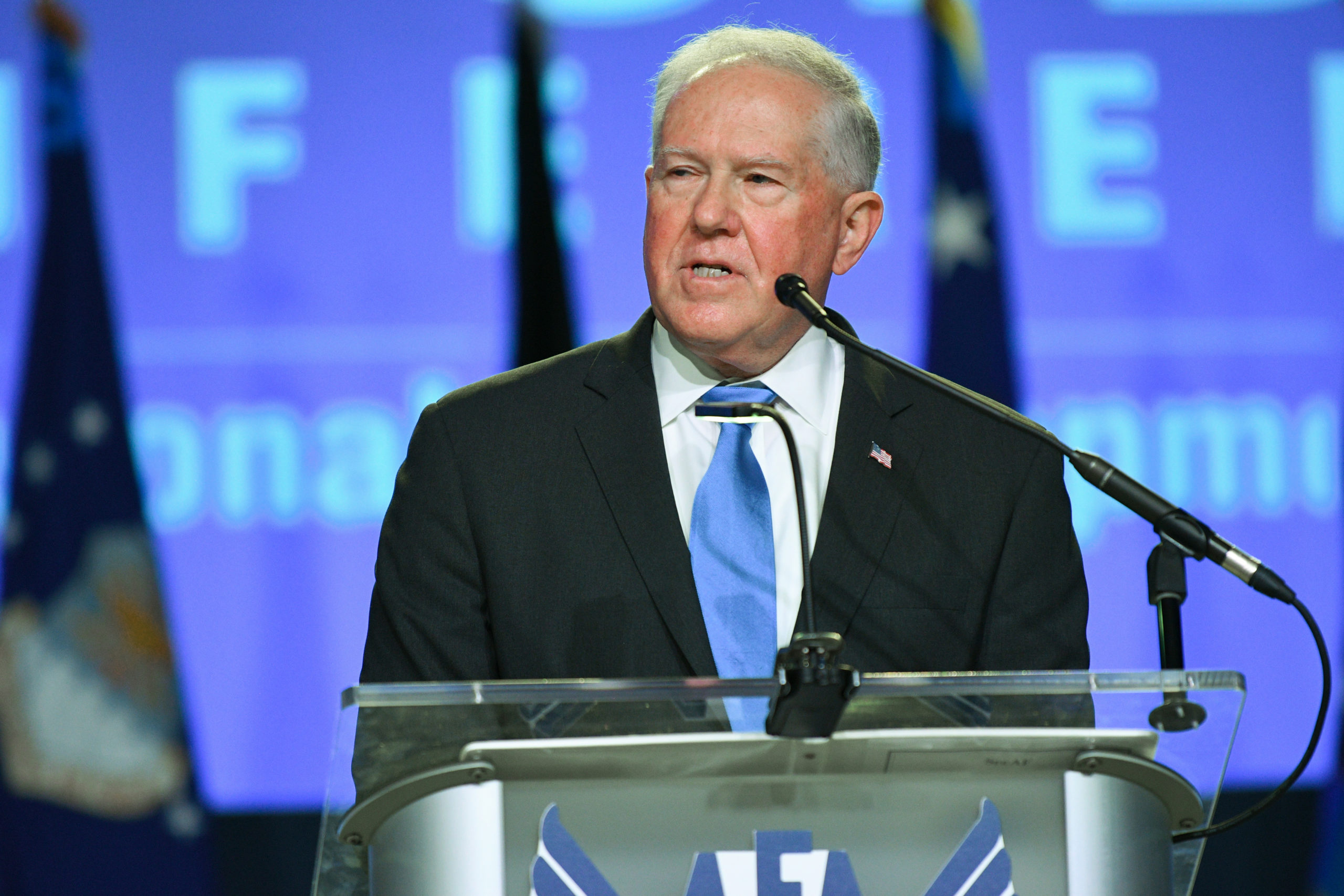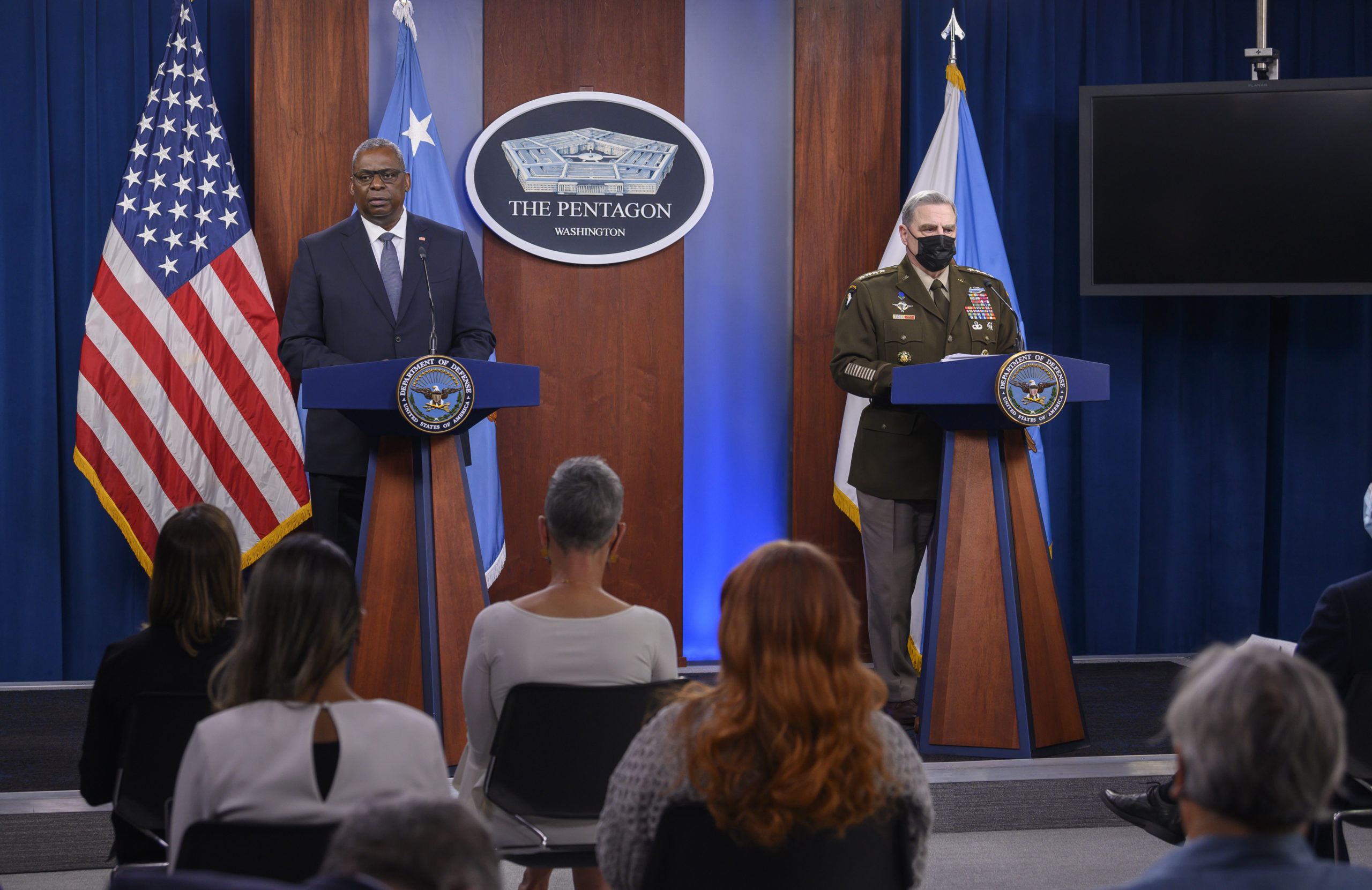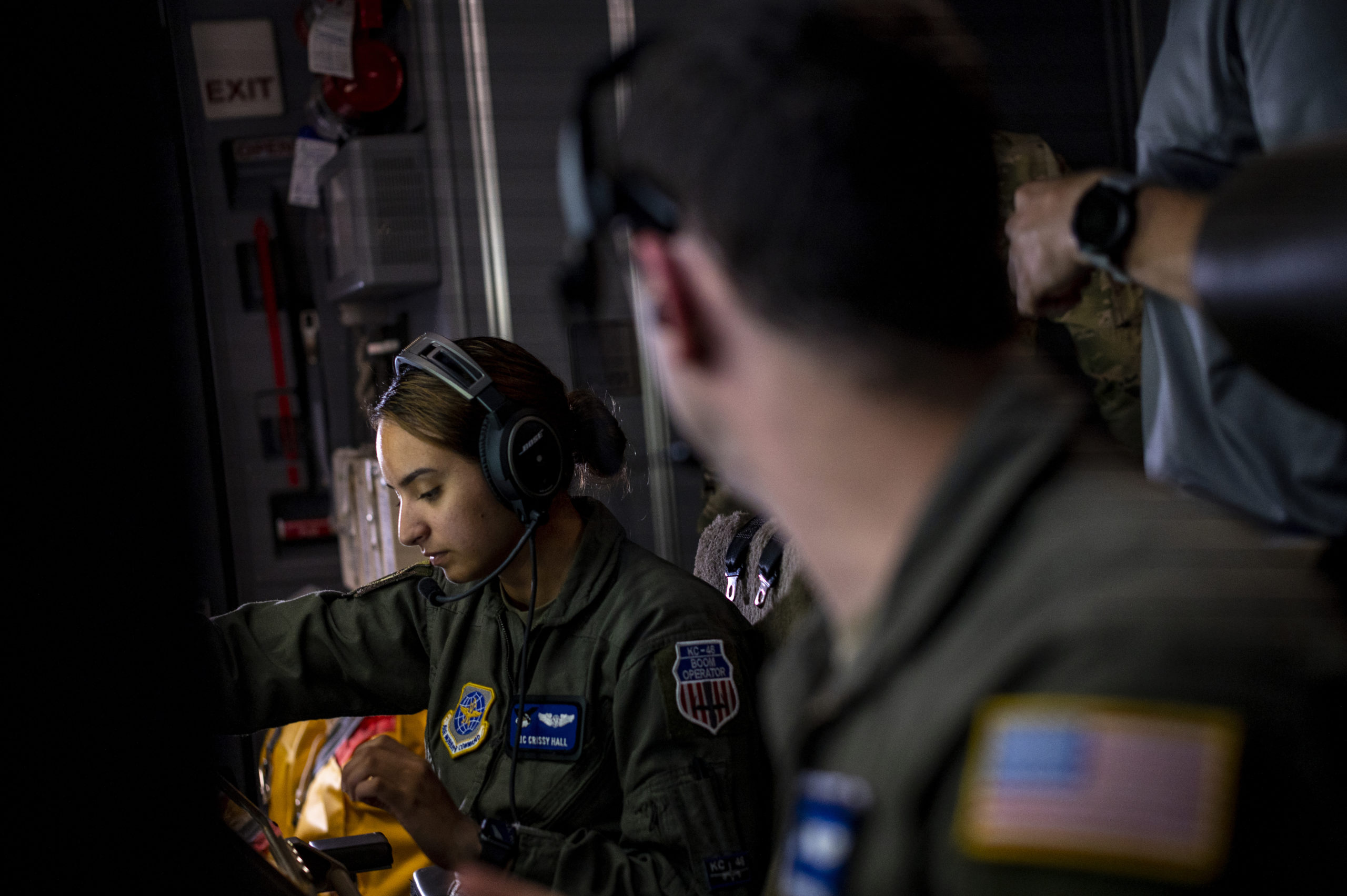AFRICAN AIR CHIEFS SYMPOSIUM, KIGALI, Rwanda—Challenged by inadequate infrastructure and vast distances, the U.S. Air Force has for decades provided airlift to France and African nations to help fight terrorism, support peacekeeping, and respond to disasters on the continent. But Air Forces Africa is calling for a better way—sharing strategic airlift.
AFAFRICA helped bridge gaps of trust and capabilities between widely divergent nations in a four-day symposium of African air chiefs that concluded Jan. 28 in Kigali, leveraging the American power to bring neighboring nations together to discuss sharing air platforms, like the many C-130s the U.S. has provided to partner African nations.
“The goal here is to find ways that we can look at it across the continent and leverage the regional expertise that is so prevalent here,” U.S. Air Forces in Europe-Air Forces Africa commander Gen. Jeffrey L. Harrigian told Air Force Magazine in an exclusive interview at the 11th African Air Chiefs Symposium (AACS).
At the third and final AACS meeting of his tenure, Harrigian said air liaison officers had across the continent helped clarify the problem and create a shared understanding with the nations they work with. This year’s AACS, the first since 2019, identified what is “in the realm of the possible” on a continent with 54 nations and widely divergent capabilities and resources.
Symposium co-host, Rwandan Air Force Gen. Jean Jacques Mupenzi, defined the shared security challenges of a continent with porous borders that are often frequented by arms, drug, and human traffickers as well as terrorists.
“Our region is vast [and] characterized by limited transportation infrastructure, hence [it] requires effective air mobility mechanisms to bridge distances, support replenishment of troops in theatre … , and attend to humanitarian assistance,” he said in his opening remarks.
“Strengthening regional cooperation in the air domain is critical in order to respond to common security challenges on the continent,” he added.
In many far-flung parts of Africa, terrorist and criminal groups have established safe havens where government control cannot reach adequately. There, the groups can operate freely, recruiting and spreading false propaganda that decreases trust in the central government.
Air Force Special Operations Command combat aviation advisor Lt. Col. Jared Cordell said that for many of the African countries he has worked with, strategic airlift is essential to national security.
“In a lot of places, airlift is the most valuable and most important thing that they can do because it brings cargo, men, and equipment to places that need it,” he said in a phone interview ahead of the conference.
“It … brings governance to those outlying areas and shows the country’s flag in disparate and outlying parts of the various countries,” he explained. “It’s not the U.S. flag that’s showing up at a random airstrip in another place. It’s their own country that’s bringing their own country’s governance to that area.”
Finding a Way Forward
To identify next steps for shared strategic airlift in Africa, Harrigian participated in bilateral meetings with air chiefs, closed-door discussions, and a briefing by the air transport resource sharing working group of the 26-member Association of African Air Forces.
A group of nine African nations from the Maghreb and Western and Eastern Africa, along with the U.S. Air Force, met virtually six times between April and August 2021 to discuss the problem set. Regional groups including the African Union and the Economic Community of West African States (ECOWAS), both potential recipients of shared air assets, were observers.
Tunisian Air Chief Maj. Gen. Mohamed Hajem, who represented one of the nations in the working group, said shared strategic airlift in Africa will require that nations have a common doctrine and standard operating procedures.
“That’s really the vision with the program, with the planning, and we should be aware of our actual capacity and the threats and challenges of the future,” he told Air Force Magazine on the sidelines of the symposium.
Harrigian said the first step to accomplishing that will be to identify what command and control might look like and to leverage what exists within regional organizations.
“We kind of have a broad understanding of what the construct would look like,” he said. “There’s some really unique relationships, multilateral ones that happen regionally. And so, we have to try to pull that together into a continental view. … That’s not easy. It’s a heavy lift.”
The Maghreb countries of Egypt, Morocco, Algeria, and Tunisia have the most advanced air forces on the continent but do not cooperate together in the air domain. Nonetheless, Tunisia is taking a lead role to promote sharing air assets in other parts of Africa.
Hajem emphasized that Harrigian’s leadership on the continent has advanced peace and security while also elevating the U.S.-Tunisia relationship.
A working group presentation at AACS found that operational-level potential exists but that agreements between senior political and military leaders are the biggest challenge. Nations must also plan ahead, acquiring interoperable assets, ensuring a reliable supply chain of spare parts, and building common practices.
“All that should be ready so that you can employ your air assets and procedures on U.S. standards to be sure that you are interoperable with the U.S. side and other partners,” Hajem said.
Botswana Air Chief Maj. Gen. Hendrick Tbuthu Rakgantswana told Air Force Magazine that his southern African nation relies on the U.S. for both training and equipment. Rakgantswana himself learned to fly C-130s at MacDill Air Force Base, Fla.
Botswana recently acquired three C-130s through U.S. Foreign Military Sales, but one is grounded due to the maintenance financial constraints, highlighting a potential benefit of resource sharing.
“In our regional economic community, the Southern African Development Community, we face a lot of disasters and crises, and we don’t have the requisite airlift capability,” he said. “So, it means, now, that we have to come together and pool our resources together.”
Resources could include funds, platforms, or trained personnel.
Botswana is involved in peacekeeping efforts in Mozambique and also provides airlift assistance to neighbors Lesotho and Malawi. But a true structure of sharing would allow countries to do more.
“This mechanism is the answer—we just now have to make it fit in the existing structures,” he said, such as the African Union or SADC.
“We just need that link. They just need to appreciate the existence of the Association of African Air Forces and how it can assist from strategic air lift mechanisms,” he said, noting that AACS is already strengthening trust among African nations.
